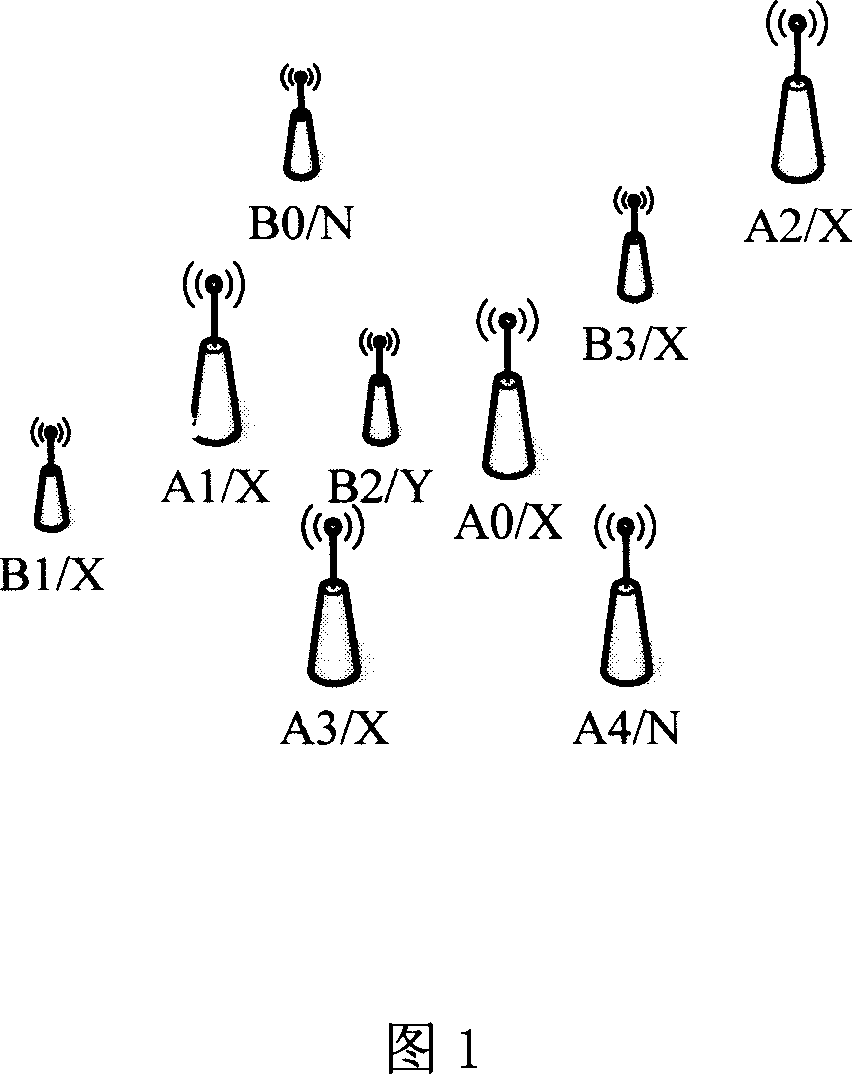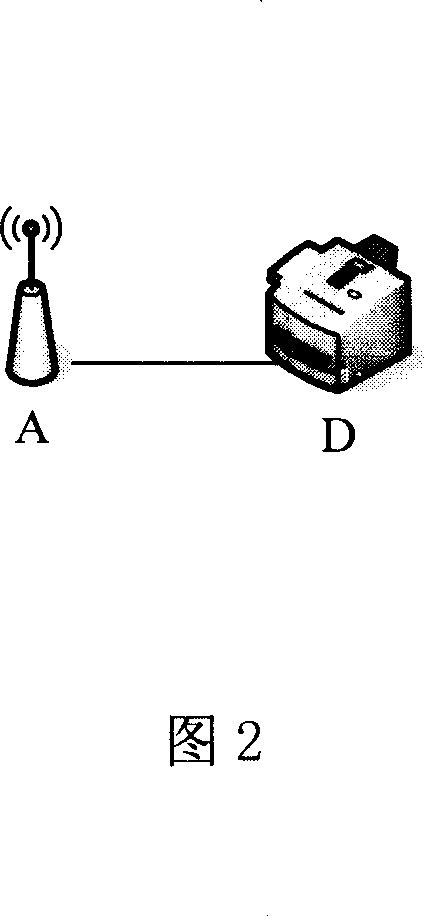Method and apparatus for realizing mobile wireless self-organizing and self-adaptive system
An adaptive system, mobile wireless technology, applied in transmission systems, electrical components, data exchange through path configuration, etc., can solve problems such as high cost, reduce workload, ensure robustness, and strengthen humanization.
- Summary
- Abstract
- Description
- Claims
- Application Information
AI Technical Summary
Problems solved by technology
Method used
Image
Examples
Embodiment approach 1
[0039] Taking Figure 1 as an example, the system can be implemented as follows:
[0040] The online devices in the system are A1, A2, A3, A0, B1, B3, the device B2 is in the passive listening state, and the devices A4 and B0 are working in the listening state.
[0041]The initial state of the system may be the first system agreement message cycle sent by any of the devices in A1, A2, A3, A0, B1, B2, and B3. Pay special attention to device B2. Although it may be an online device at the beginning, due to Devices A1, A3, and A0 are superior in performance and location, and device B2 can only be in a passive listening state; device B3, because of its special position as a bridge between devices A0 and A2, although its performance is not strong, it is still The online device, and then analyze the device B1, because it is on the edge, it can only keep in touch with the device A1, and because of the location, it is reserved as an online device, and the devices B0 and A4 have no reque...
Embodiment approach 2
[0066] In order to understand and implement the content of the present invention more clearly, we simplify the above example to obtain the following network structure:
[0067] Suppose we set the maximum number of online devices in the system to one, but there are multiple devices in the system.
[0068] Obviously, regardless of the process, one of the most powerful devices always ends up being the online device (if the device is set to online mode), and the other devices are either passively listening or are listening.
[0069] This is a typical application mode, where the tour guide or the narrator dominates. If the narration is recorded, it will be sent to each device in the system by broadcasting at a specific location, that is, each tourist or tourist. At the same time, if tourists have any questions, they can communicate with the tour guide or narrator alone, and tourists can also chat among themselves.
[0070] Of course, if there are two tour groups both using this de...
Embodiment approach 3
[0080] Following the application environment of the second method, we still illustrate another form of the system in the form of tour guides and tourists.
[0081]Assume that the tour group has 40 passengers who are separated during free activities and are distributed in various places. Some passengers can no longer listen to the tour guide's assembly broadcast, but it can be achieved through the forwarding of the same group members, that is, it needs to be forwarded Broadcast content or forward peer-to-peer information.
[0082] Assuming that all devices are set in online mode at the beginning, because the maximum number of online devices is set to 1, all other devices are passively monitored. At this time, set the value to 41, then all devices can enter The system agrees that in the information cycle, of course, through forwarding, the collection information can also be conveyed to the equipment that could not be directly delivered, prompting the passenger to return to the t...
PUM
 Login to View More
Login to View More Abstract
Description
Claims
Application Information
 Login to View More
Login to View More - R&D
- Intellectual Property
- Life Sciences
- Materials
- Tech Scout
- Unparalleled Data Quality
- Higher Quality Content
- 60% Fewer Hallucinations
Browse by: Latest US Patents, China's latest patents, Technical Efficacy Thesaurus, Application Domain, Technology Topic, Popular Technical Reports.
© 2025 PatSnap. All rights reserved.Legal|Privacy policy|Modern Slavery Act Transparency Statement|Sitemap|About US| Contact US: help@patsnap.com


